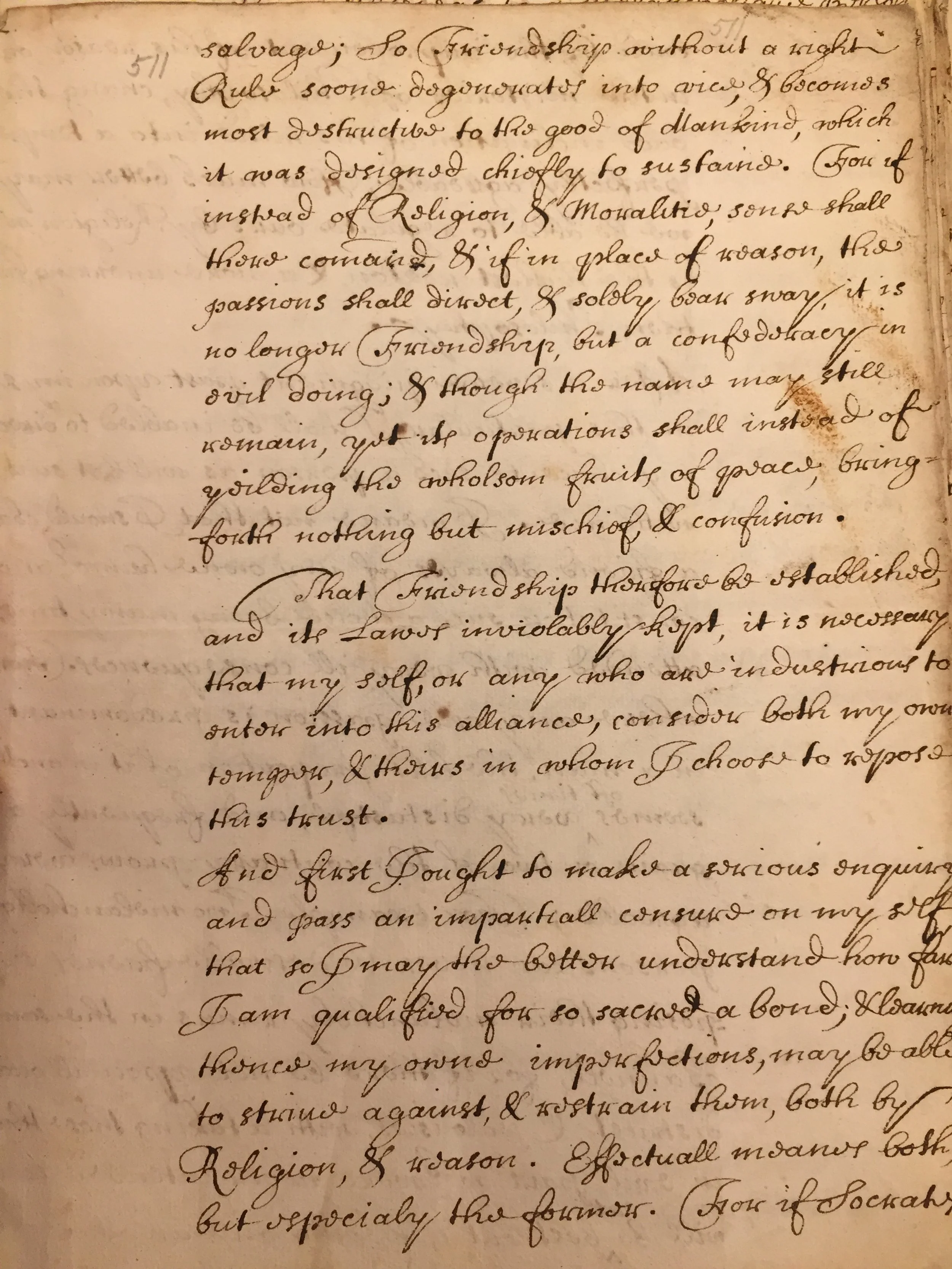Mary Beale: A Discourse on Friendship
All images were taken by and belong to Katherine Holderith.
With the recent recovery effort of early modern female writing these once lost voices are now singing to modern scholars and revealing the intricacies of their lives. It is through their works that we are now able to draw new conclusions on how women of the sixteenth and seventeenth centuries participated in male-dominated spheres, such as friendship, politics, authorship, and commerce through their own forms of engagement.
Mary Beale, for instance, is primarily known as a prominent female portrait artist in England during the late seventeenth century. She is, however, lesser known as an author. Changing attitudes on the definition of authorship and literary contributions during and prior to the early modern period have now expanded a once-narrow scholarly canon. With her contributions to the artistic and intellectual fields of the time, such as the subject of this edition, Discourse on Friendship, Mary Beale has earned her place among praised female authors found in the canon. This research hopes to provide a brief overview of the lesser-known manuscript author, her intricate life, and the environment in which she was writing in order to give readers the option to further explore this fascinating figure of early modern female authorship.
This research focuses on Mary Beale as an important literary figure in the early modern period, rather than solely an artistic one; though the focus of this edition, Discourse on Friendship, is not Mary’s only contribution to the early modern literary field. As a subject, she is the inspiration for her great friend Samuel Woodforde’s poem, “To Belisa”, and appears often in his diaries (Barber 24). She also is recognized in Thomas Flatman’s letters and, of course, in her husband’s many notebooks. As an author, Mary is found in print, contributing four psalms in Woodforde’s Paraphrase Upon the Psalms of David and her hand is conspicuous in her husband’s notebooks (Barber). Discourse, however, is her most lengthy extant piece and found only in manuscript. At 6,000 words, it is not the haphazard musing of a bored housewife in the country, but rather a well-outlined piece of scholarship that engages with other authors’ contributions on the popular topic of friendship.


